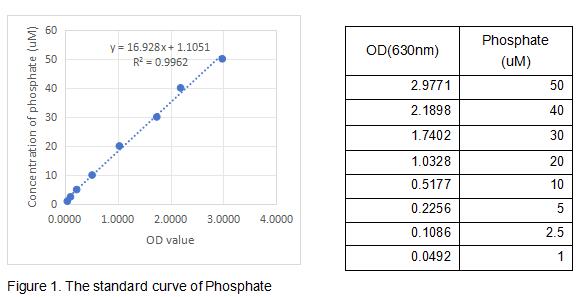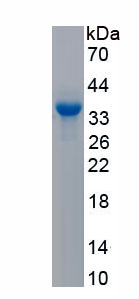Active Valosin Containing Protein (VCP) 

IBMPFD; p97; TERA; Transitional Endoplasmic Reticulum ATPase; 15S Mg(2+)-ATPase p97 subunit
- UOM
- FOB US$ 268.00 US$ 670.00 US$ 1,340.00 US$ 4,020.00 US$ 10,050.00
- Quantity
Overview
Properties
- Product No.APC601Hu01
- Organism SpeciesHomo sapiens (Human) Same name, Different species.
- ApplicationsCell culture; Activity Assays.
Research use only - DownloadInstruction Manual
- CategoryNeuro science
- Buffer FormulationPBS, pH7.4, containing 0.01% SKL, 5% Trehalose.
- Traits Freeze-dried powder, Purity > 95%
- Isoelectric Point5.9
Sign into your account
Share a new citation as an author
Upload your experimental result
Review

Contact us
Please fill in the blank.
Activity test

VCP is an ATPase Associated with diverse cellular Activities (AAA ) that has a key role in maintaining cellular homeostasis. VCP is ubiquitously expressed in tissues. At cellular level, VCP functions in many cellular compartments; VCP localizes mainly in the cytoplasm, while a smaller fraction binds to organelles or localizes in the nucleus, where it is implicated in different pathways. VCP assembles and acts as a homo-hexamer, in which each monomer is structured in an N-terminal domain that interacts with adaptors and co-factors; in two ATPase domains, D1 and D2, that by hydrolyzing ATP concur, respectively, in the hexamer formation and in supporting VCP activity; and in a C-terminal domain that binds to a small subset of co-factors and adaptors cooperating with D2 activity. The main role of VCP is to recognize and to extract ubiquitinated proteins from membranes, protein complexes, protein aggregates, or chromatin, modulating their ubiquitination or de-ubiquitination, and to enhance their degradation through the UPS or the autophagic pathway. The activity of recombinant human VCP was measured by its ability to hydrolyze the substrate ATP to phosphate which was detected by the malachite green phosphate detection Kit (Beyotime # S0196M). The reaction was performed in the assay buffer 20 mM HEPES, 13 mM NaCl and 1% glycerol, pH 8.5, initiated by addition 27 μL of various concentrations of VCP (diluted by assay buffer) to 3 µL of 100 mM ATP and 100 mM MgCl2 mixture. The final well serves as a negative control with no VCP, replaced with 27 μL assay buffer. Incubated at 37℃ for 5min, then stop the reaction by quickly freezing samples in the dry ice and ethanol. 4 ul samples was added to 196 ul assay buffer after thawing at room temperature followed by adding 70 ul phosphate detection agent and incubated at room temperature for 30min, then read at a wavelength of 630 nm. The specific activity of recombinant human VCP is >1000 pmol/min/µg.
Usage
Reconstitute in 10mM PBS (pH7.4) to a concentration of 0.1-1.0 mg/mL. Do not vortex.
Storage
Avoid repeated freeze/thaw cycles. Store at 2-8°C for one month. Aliquot and store at -80°C for 12 months.
Stability
The thermal stability is described by the loss rate. The loss rate was determined by accelerated thermal degradation test, that is, incubate the protein at 37°C for 48h, and no obvious degradation and precipitation were observed. The loss rate is less than 5% within the expiration date under appropriate storage condition.
Increment services
-
 BCA Protein Quantification Kit
BCA Protein Quantification Kit
-
 Molecular Mass Marker for Protein
Molecular Mass Marker for Protein
-
 Monoclonal Antibody Customized Service
Monoclonal Antibody Customized Service
-
 Polyclonal Antibody Customized Service
Polyclonal Antibody Customized Service
-
 Protein Activity Test Experiment Service
Protein Activity Test Experiment Service
-
 Electrophoretic Mobility Shift Assay (EMSA) Experiment Service
Electrophoretic Mobility Shift Assay (EMSA) Experiment Service
-
 Buffer
Buffer
-
 Lentivirus Packaging Experiment Service
Lentivirus Packaging Experiment Service
-
 Adenovirus Packaging Experiment Service
Adenovirus Packaging Experiment Service
-
 Real Time PCR Experimental Service
Real Time PCR Experimental Service
-
 Spike RBD Protein (S-RBD)
Spike RBD Protein (S-RBD)
-
 Protein G
Protein G
-
 Protein A
Protein A







